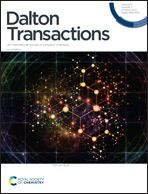Ti3C2Tx (MXene)/Pt nanoparticle electrode for the accurate detection of DA coexisting with AA and UA†
Abstract
Dopamine (DA), uric acid (UA) and ascorbic acid (AA) are biomolecules widely distributed in the human body and play an important role in many physiological processes. An abnormal concentration of them is associated with various diseases. Thus, the accurate and fast detection of them has been one of the major demands in the healthcare industry. In this study, we demonstrate that Ti3C2Tx/PtNP modified glassy carbon electrodes (GCEs) show a good electrochemical performance in the detection of DA and UA. However, there is no response signal to AA for either the CV or DPV curve due to the electrostatic repulsion between the negatively charged electrode surface and the negatively charged AA. Ti3C2Tx(MXene)/Pt nanoparticles (PtNPs) are prepared by etching Ti3AlC2(MAX) with HF and reducing H2PtCl6 with a NaBH4 aqueous solution. The morphology of Ti3C2Tx/PtNPs is multilayered accordion-like Ti3C2Tx decorated with PtNPs with a diameter of 10–20 nm. Furthermore, it is found that the electrochemical detection of DA will be enhanced by AA. The electrochemical detection rule of AA enhanced DA can be expressed as follows: I(DA+AA) = 0.011216CAA + 0.039950CDA + 1.1175(I(DA+AA) is the peak current of DA coexisting with AA. CAA is the concentration of AA. CDA is the concentration of DA). This can be used as a calibration to correct the concentration of DA when AA and DA coexist. Notably, AA promotes the stability of the electrode because it cleans the oxidation products from the electrode surface in time. In addition, the sensor exhibits good reproducibility and satisfactory recovery results in a real sample.



 Please wait while we load your content...
Please wait while we load your content...